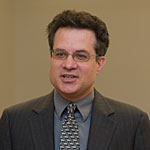Monday, Oct. 4, the opening day of the Supreme Court term, marks Elena Kagan’s first day behind the bench as a Supreme Court justice. Gregory Magarian, JD, professor of law at Washington University In St. Louis and former clerk for retired Justice John Paul Stevens, says that the experience of oral argument from the other side of the bench will be entirely new to Kagan.
“There is no formal or conventional restriction on new arrivals’ participation in argument, but in all likelihood, Justice Kagan will display a bit of reserve at first while she gets used to the rhythm of questioning by nine justices,” Magarian says.
This summer, Magarian led a group of WUSTL law professors who vetted Kagan for the American Bar Association (ABA) — one of three reading groups asked to help the ABA qualify its recommendation of Kagan to the U.S. Senate for confirmation.
“Of course, she experienced this rhythm from the other side as solicitor general, so in all likelihood, she will not take very long to make her presence known,” Magarian says. “Moreover, the presence of four relatively new justices on the bench, after years without any change, should soften Justice Kagan’s landing.”

Magarian says that the importance of seniority to the court probably will surprise any newcomer.
“Whenever the justices do anything together — eat lunch, pose for a photo, meet in conference — they do so in order of seniority,” he says.
“The justices’ conferences, where they vote on the outcomes of cases, are closed to everyone but the nine justices.
“The junior justice — now Justice Kagan — is responsible for opening the door to the conference room and asking the marshal stationed outside for whatever the justices might need in the room. At conference, the justices speak in order of seniority with the chief going first,” Magarian says.